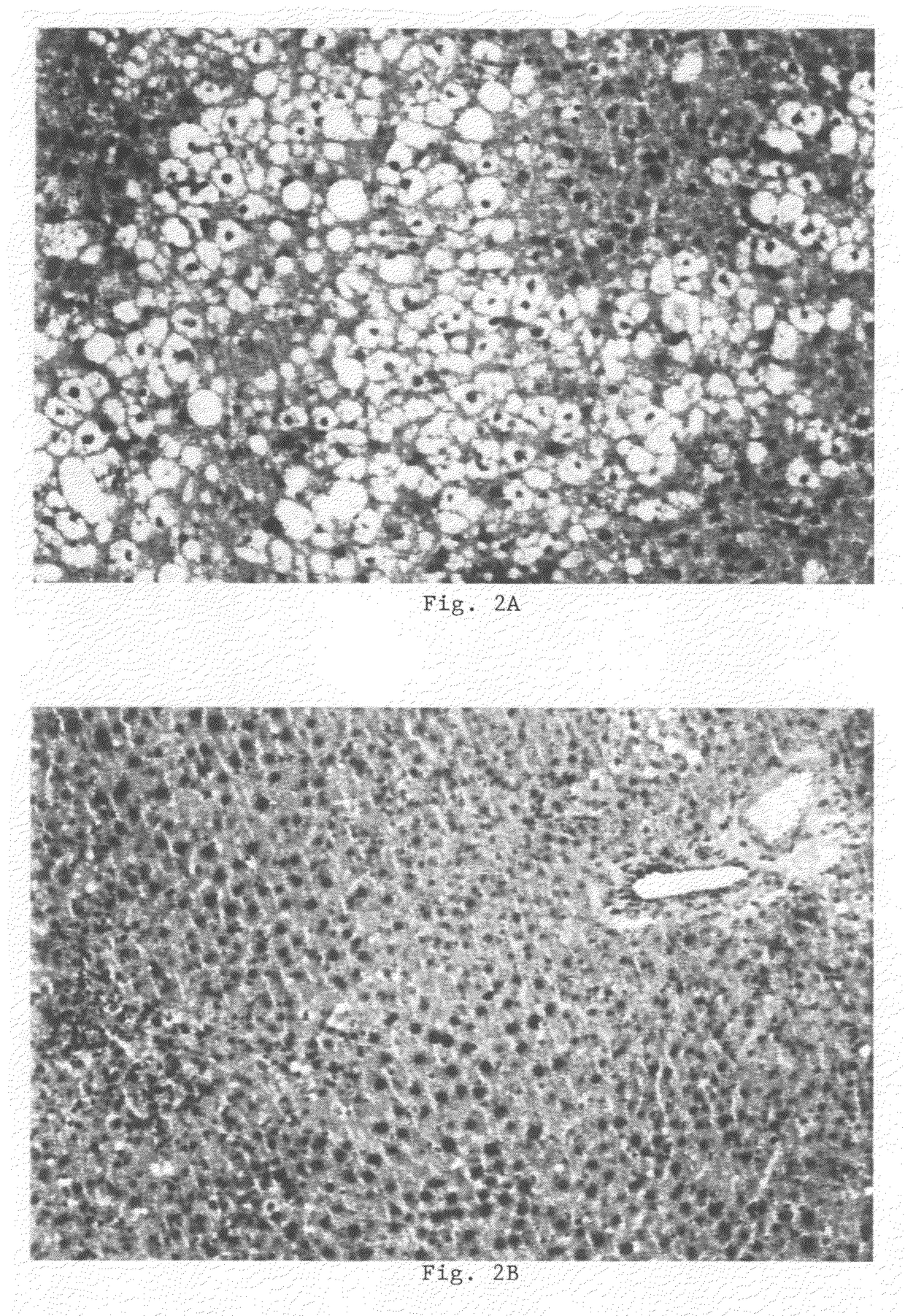Sphingolipids in treatment and prevention of steatosis and of steatosis or of hepatotoxicity and its sequelae
a technology of steatosis and hepatotoxicity, which is applied in the field of sphingolipids in the treatment and prevention of steatosis and steatosis or hepatotoxicity and its sequelae, can solve the problems of liver failure, hepatocellular injury, progressive hepatic fibrosis (scarring) and cirrhosis, etc., to prevent the development of steatosis, allevia
- Summary
- Abstract
- Description
- Claims
- Application Information
AI Technical Summary
Benefits of technology
Problems solved by technology
Method used
Image
Examples
example 1
[0151]Forty-five female heterozygous APOE3*Leiden (E3L) mice were fed a high fat and high cholesterol diet for four weeks (week −4 to 0). The mice were housed during the experiment in clean-conventional animal rooms (relative humidity 50-60%, temperature ˜21° C., light cycle 6 am to 6 pm). Mice were supplied with food and acidified tap water ad libitum.
[0152]At week 0, the mice were randomized on the basis of plasma total triglyceride and cholesterol levels into a control group of fifteen mice and two treatment groups of fifteen mice.
The groups were:
[0153]1. high fat, high cholesterol diet only[0154]2. high fat, high cholesterol diet plus 0.7% (w / w) phytosphingosine[0155]3. high fat, ‘high’ cholesterol diet with a reduced cholesterol content, resulting in about the same plasma cholesterol level as was obtained in group 2.
[0156]The treatment was continued for 16 weeks. During the treatment period, tail blood samples were obtained at week 0, 2, 4, 8, 12, and 16 to measure plasma chole...
example 2
[0169]The experiment as described in example 1 was repeated several times but using 1% phytosphingosine as a supplement to the W-diet. Each time, one group (control group, consisting of 6 or 12 apoE3*-Leiden mice) was fed the high fat high cholesterol W-diet. Another group (treatment group, consisting of 6 or 12 apoE3*-Leiden mice), was fed the same high fat high cholesterol W-diet diet supplemented with 1% phytosphingosine.
[0170]In all mice the following parameters were determined (after 4 hours of fasting) after a diet period of 4 weeks: plasma total cholesterol (PTC), plasma triglycerides (PTG), plasma free fatty acids (PFFA), liver total cholesterol (LTC), liver triglycerides (LTG), liver cholesteryl esters (LCE), serum amyloid A (SAA) (mg / ml), fibrinogen (in mg / ml), body weight (in g), liver weight (in g), heart weight (in g), ALAT (in U / L). The results showed marked differences in liver structure, chemical composition and function between the control group and the treatment gr...
PUM
| Property | Measurement | Unit |
|---|---|---|
| wt. % | aaaaa | aaaaa |
| wt. % | aaaaa | aaaaa |
| wt. % | aaaaa | aaaaa |
Abstract
Description
Claims
Application Information
 Login to View More
Login to View More - R&D
- Intellectual Property
- Life Sciences
- Materials
- Tech Scout
- Unparalleled Data Quality
- Higher Quality Content
- 60% Fewer Hallucinations
Browse by: Latest US Patents, China's latest patents, Technical Efficacy Thesaurus, Application Domain, Technology Topic, Popular Technical Reports.
© 2025 PatSnap. All rights reserved.Legal|Privacy policy|Modern Slavery Act Transparency Statement|Sitemap|About US| Contact US: help@patsnap.com



